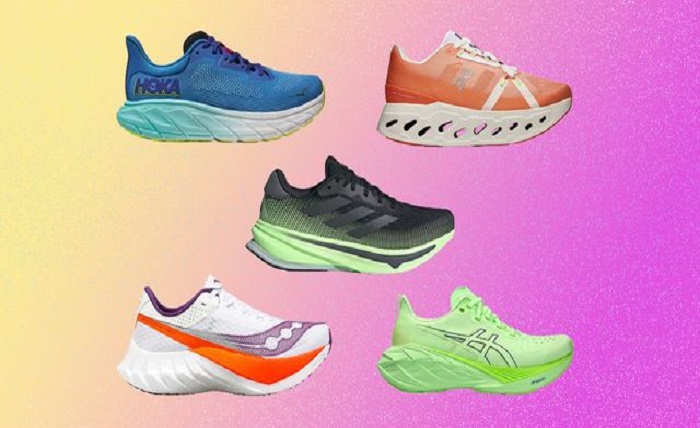Introduction:
Selecting the right running shoes is crucial for any runner, whether you’re a beginner or a seasoned marathoner. The perfect pair can elevate your performance, provide necessary support, and reduce the risk of injury. This blog post explores various aspects of running shoes, from understanding different types and features to tips on choosing the right pair for your running needs.
What Are Running Shoes?
Running shoes are specifically designed footwear intended to provide support, comfort, and durability during running. These shoes are crafted to handle the high-impact nature of running and offer various technologies to aid runners in achieving optimal performance.
Importance of Choosing the Right Running Shoes
Choosing the right running shoes is vital for several reasons. The correct pair can prevent injuries, improve your running efficiency, and provide comfort during long runs. It’s essential to understand your foot type and running style to select shoes that offer the best support and cushioning.
Types of Running Shoes
Running shoes can be categorized into several types, including stability shoes, neutral shoes, and motion control shoes. Each type caters to specific foot types and running styles, ensuring that every runner can find shoes that provide the right level of support and flexibility.
Key Features to Look for
When shopping for running shoes, key features to consider include cushioning, stability, durability, and breathability. These features significantly impact the shoe’s performance and your overall running experience.
How to Determine Your Foot Type
Understanding your foot type is crucial in selecting the right running shoes. There are three main foot types: pronated, supinated, and neutral. You can determine your foot type through a simple wet test at home or by visiting a specialized running store for a professional analysis.
The Role of Arch Support
Arch support in running shoes plays a critical role in preventing injuries and providing comfort, especially for runners with flat feet or high arches. Proper arch support ensures better alignment and reduces strain on your feet and legs during runs.
The Impact of Cushioning
Cushioning in running shoes absorbs the impact while you run, providing comfort and protecting your joints. Different levels of cushioning are available to cater to personal preference and running conditions.
Running Shoes for Different Terrains
The terrain you run on influences the type of running shoes you need. Trail running shoes, for example, offer more grip and stability for uneven surfaces, while road running shoes are designed for pavement and provide smoother cushioning.
Importance of Shoe Fit
A good fit is crucial when selecting running shoes. Shoes that are too tight can cause blisters and toe pain, while those that are too loose can lead to slipping and inadequate support. It’s recommended to try on running shoes in the afternoon when your feet are naturally swollen.
When to Replace Running Shoes
Running shoes should be replaced every 300-500 miles to ensure they provide the proper support and cushioning. Worn-out shoes can lead to injuries and discomfort, so keeping track of your mileage is important.
Latest Innovations in Running Shoes
Recent innovations in running shoes include advancements in materials and design, such as responsive cushioning systems and lightweight, breathable fabrics. These innovations aim to enhance performance and comfort.
How to Care for Running Shoes
Proper care can extend the life of your running shoes. Tips for care include cleaning them regularly, drying them properly after wet runs, and not wearing them for non-running activities.
Popular Brands and Models
Several brands are renowned for their high-quality running shoes, including Nike, Adidas, Brooks, and Asics. Each brand offers various models that cater to different running needs and preferences.
Expert Tips for First-Time Buyers
First-time buyers should consider visiting a specialty running store for a professional fitting, trying on multiple brands and styles, and considering their budget and running goals when selecting running shoes.
Conclusion:
Choosing the right running shoes is a pivotal decision for any runner. It requires understanding your foot type, recognizing what features are most important, and considering where and how you’ll be using them. With the right pair, you can achieve greater performance, comfort, and longevity in your running journey.
FAQs:
How often should I replace my running shoes? Replace your running shoes approximately every 300-500 miles to maintain optimal cushioning and support.
Can I wear trail running shoes on the road? While you can wear trail running shoes on the road, they are specifically designed for off-road conditions and may wear out faster on pavement.
What is the best way to determine my foot type? The wet test at home or a professional gait analysis at a running store are effective methods to determine your foot type.
How do I know if my running shoes fit properly? Running shoes should offer a snug fit without any discomfort; ensure there is about a thumb’s width of space in the toe box.
Are expensive running shoes better than cheaper ones? Not necessarily; the best running shoe for you depends on your specific foot type, running style, and needs rather than price.











